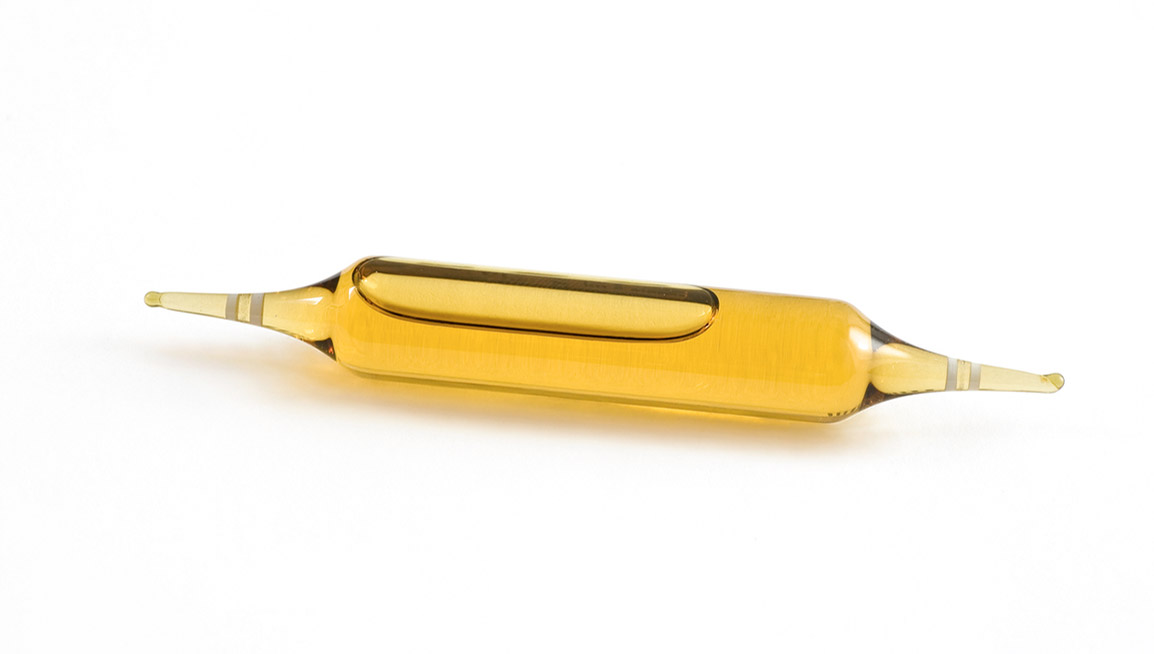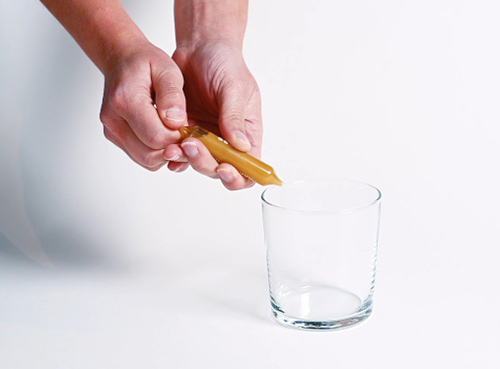b. The materials used in the design of primary pharmaceutical packaging
The most commonly used materials in the manufacture of primary pharmaceutical packaging are: glass, plastic, and aluminum.
Glass, such as borosilicate glass (type I), and soda-lime glass (type III), are respectively valued for their chemical and thermal resistance, and their protection against UV light.
Our double-tip drinkable ampoules are ideal solutions for your pharmaceutical and nutraceutical formulas. SFAM favors these glasses for the manufacturing of its double-tip glass ampoules, in order to ensure the protection, quality, and safety of the products.
3. Current regulations for primary packaging in pharmaceutical industry: key information
Certain essential information, required by regulations, must be included on primary packaging, particularly in the pharmaceutical industry:
- The brand and name of the medication or dietary supplement
- The pharmaceutical formulation (for medications)
- The composition with detailed dosages and concentrations of active substances per unit of intake
- The manufacturing batch number
- The expiration date
- The instructions for administration and use of the product
- Safety information including precautions for use and contraindications
4. Current regulations for primary pharmaceutical packaging: manufacturing standards and rules
a. The quality norms
Strict standards govern the production of primary packaging to ensure the safety and efficacy of products. These standards include:
- The European Pharmacopoeia: defining standards for materials used, such as borosilicate glass.
- The ISO 15378 norm: which specifies the requirements for GMP, Good Manufacturing Practices for primary packaging materials.
b. The regulations
While some regulations vary by region, there are quality standards established by the International Pharmacopoeia:
- Compliance with GMP, Good Manufacturing Practices. These practices involve manufacturing products according to very strict procedures. The UNI EN ISO 15378 : 2018 standard specifies the expected requirements at all stages of the manufacturing process, from design to logistics, including the manufacturing of the pharmaceutical product.
- Compatibility tests to ensure that the packaging and its contents do not interact.
- Quality controls.
In addition, there are equally strict rules for accessories used in the administration of medications. This includes medical devices detailed by Regulation (EU) 2017/745, which must meet strict safety criteria.
Primary packaging is therefore essential for ensuring the safety, efficacy, and quality of pharmaceutical products. The materials used, types of closures, mandatory labeling, and quality standards are all critical factors.
Committed to meeting these requirements, SFAM provides innovative, high-quality solutions with its double-tip glass ampoules, tailored to the needs of the pharmaceutical and dietary supplement markets.
 https://www.sfamgroup.com/wp-content/uploads/2025/05/use-glass-ampoule-pharmaceutical-packaging.jpg
654
1154
SFAM
https://www.sfamgroup.com/wp-content/uploads/2024/06/logo-sfam.svg
SFAM2025-05-21 14:30:172025-05-21 14:22:20What is a glass ampoule? Its role in pharmaceutical and nutraceutical packaging
https://www.sfamgroup.com/wp-content/uploads/2025/05/use-glass-ampoule-pharmaceutical-packaging.jpg
654
1154
SFAM
https://www.sfamgroup.com/wp-content/uploads/2024/06/logo-sfam.svg
SFAM2025-05-21 14:30:172025-05-21 14:22:20What is a glass ampoule? Its role in pharmaceutical and nutraceutical packaging



